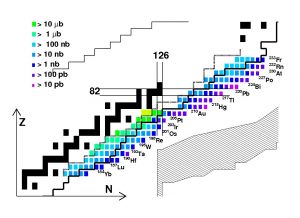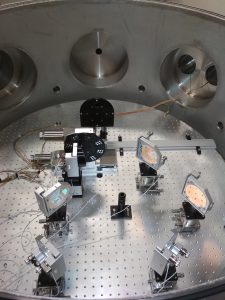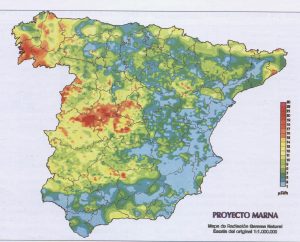I am presently following three main research lines:
Understanding the atomic nucleus and nuclear matter with reactions induced by relativistic radioactive ion beams.

73 neutron-rich nuclei produced in neutron star mergers and synthesized in the lab for the first time by my team between 2005 and 2010.
Reactions induced by relativistic radioactive beams give access to nuclear matter as the one expected in neutron stars. These reactions can also be used to reproduce in the lab the r-process nucleosynthesis taking place in neutron star merger events.
I make use of the beams produced by the GSI accelerators in Darmstadt (Germany) to induce reactions as nucleon knock-out, fragmentation or fission providing insight into the properties of neutron-rich nuclei. Some of my main achievements are the production of new heavy neutron-rich nuclei (), the determination of the half-lives of some of those nuclei impacting the r-process nucleosynthesis () and the investigation of fission at high energies. The projects I am presently promoting are:
- Nucleon knock-out from medium-mass neutron-rich nuclei to investigate shell effects far from stability and nucleon-nucleon correlations in asymmetric nuclear matter.
- Nucleon resonances in asymmetric nuclear matter using isobar charge-exchange reactions of relativistic nuclei.
- Fission of nuclei far from stability.
Laser-plasma acceleration technologies.

Picture of the acceleration vacuum chamber installed at L2A2 showing the laser beam transport and focusing systems as well as the plasma acceleration target and some radiation diagnostics systems.
Laser-plasma acceleration is a promising technology changing the paradigm for particle acceleration. Ultra short (~ 20 fs) laser pulses with energies above 1 J efficiently focus (~ 50 μm2) on target represent energy intensities above 1020 W/cm2, generating acceleration fields around 1013 V/m. Those fields are orders of magnitude larger than the ones obtained with the present radio-frequency technology.
The Laser Laboratory for Acceleration and Applications (L2A2) is equipped with a 45 TW laser system where my team is developing some of the technologies required for a continuous operation of a laser accelerator, i.e. multi-shot targets, positioning, focusing, and monitoring systems.
Taking advantage of this new research infrastructure at USC, I am promoting the LaserPET experiments aiming at demonstrating that micro-accelerators based on the laser-plasma acceleration technology could be competitive for the production of radioisotopes for medical imaging applications. Decentralized production centers of radiotracers may open new possibilities, in particular for the use of PET molecular imaging in diseases diagnostics or in drug discovery. Laser-plasma acceleration could be the enabling technology to produce on-demand doses of PET probes of interest at low cost, in an automated, user-friendly device. The compact size of laser-plasma accelerators would reduce the capital cost of the accelerator and the required infrastructures. Further cost reduction would be brought by kit-based radiochemistry systems that are presently developed by the progress in microfluidics.
My team is also collaborating with other projects at L2A2 investigating laser-induced X-ray and neutron sources.
In-door radon measurement and mitigation.

Galicia is among the regions in Europe with the largest radon exhalation rate. My research group is working for a decade in developing new techniques for in-door radon measurement (RadonLab). More recently, a close collaboration with building engineers made also possible to develop mitigation actions.
Both technologies for in-door radon measurement and mitigation have been transfer to a USC spin-off company (INTERA).
Last update May 2018